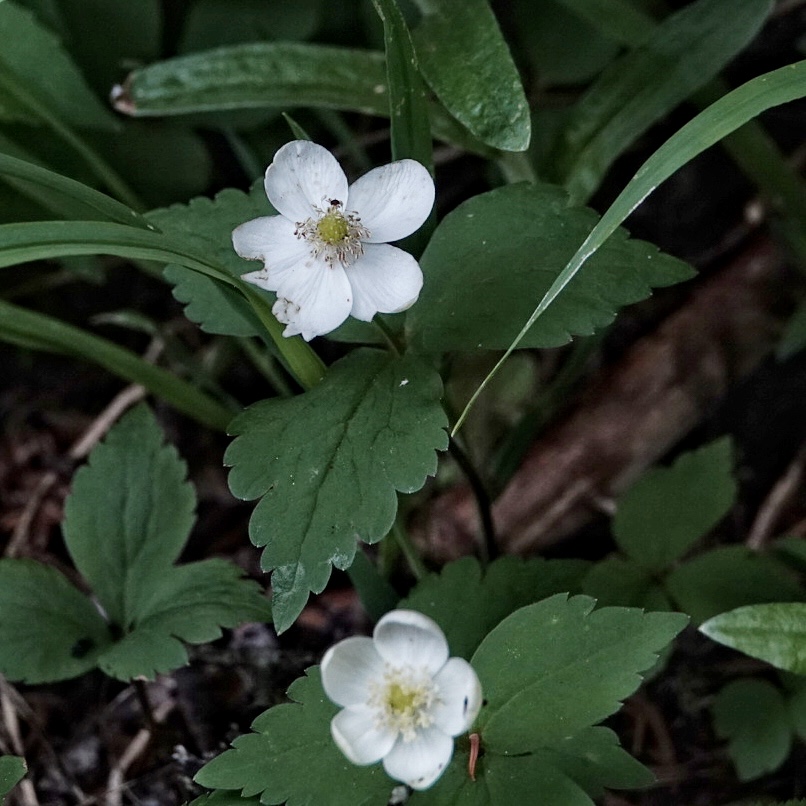
Anemone deltoidea apparently sometimes goes by the common names 3-leaf anemone and western white anemone, but I’ve always called it Columbia windflower. This plant with its elegant flowers is in the buttercup family (Ranunculaceae). I sort of identified it back when I first got interested in wildflowers, but even then I knew it was a tentative id, because it was just based on the color of the flowers, and other Anemone occasionally do have white flowers. So, on the excursion I talked about in ‘A Trip to Canyon Creek‘ I decided to nail down this id. And it turned out to be quite simple- for Anemone deltoidea the leaves just below the flower (technically called the involucre leaves) are simple leaves, and while toothed and sometimes lobed, they are not deeply dissected. Other Anemone sp. have compound involucre leaves, or those leaves are deeply dissected. No tedious counting of stamens, or consensus color perception required.
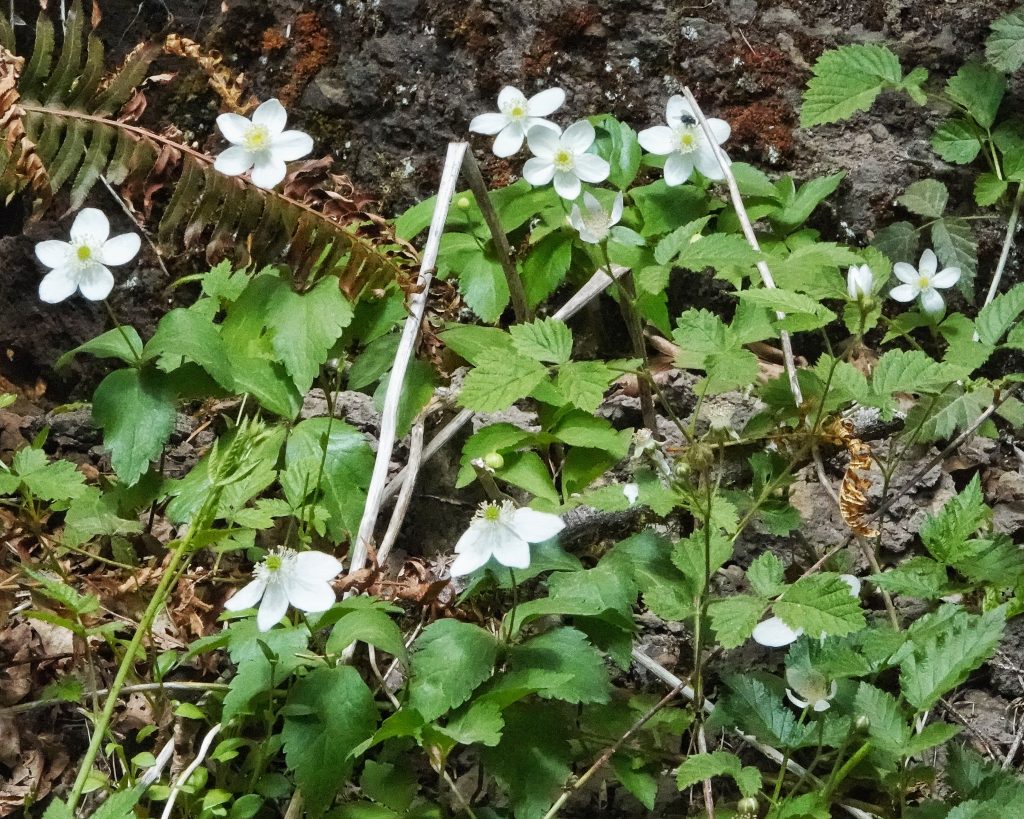
I would guess that most of the flowers that I’ve labeled as Columbia windflower were correctly identified, but now I’ll know for sure. They are a delightful flower to find, and with the relatively large size of the flower, they are easily spotted and really brighten up many a dark corner of the forest. There is a dearth of information about the relationship this plant has with the animals in its ecosystem, but I have no idea if that is because it hasn’t been studied much, or simply is not an important food plant, since many members of Ranunculaceae are known to be at least mildly toxic. Based on the number of spiders I’ve seen on the blooms of this plant, there must be a number of pollinators that visit it.
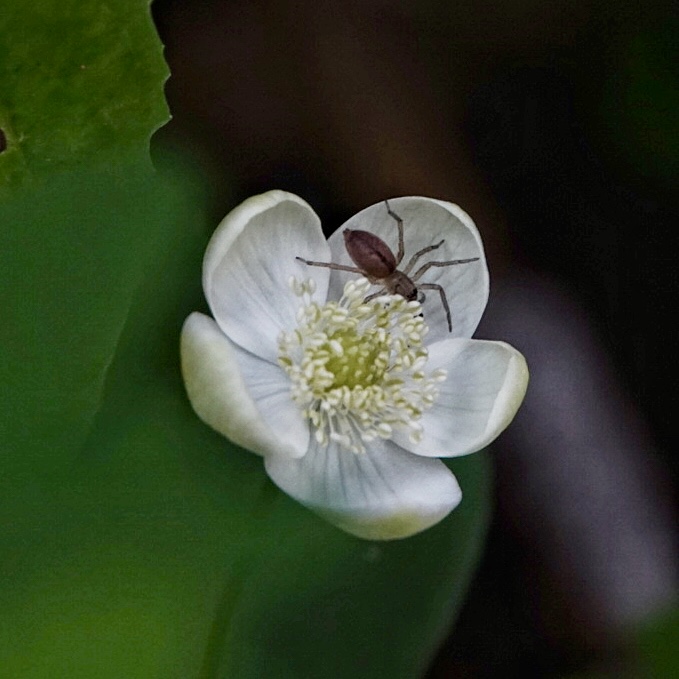
From Leslie Haskin, “Wild Flowers of the Pacific Coast”; The anemones are slender, delicate plants, named after the Greek god of the winds, perhaps because they bow before the gentlest of breezes. If, as some say, their god sends the zephyr to open their flowers, we also know that at times he is a hard master, for on stormy days the delicate flowers are ruthlessly torn apart and scattered far and wide…The three-leaved anemone is one of the sturdiest of its kind…These flowers are about the size and shape of thimble-berry blooms. I make this comparison because I first found them blossoming at the foot of thimble-berry bushes, and was much impressed by the resemblance.”
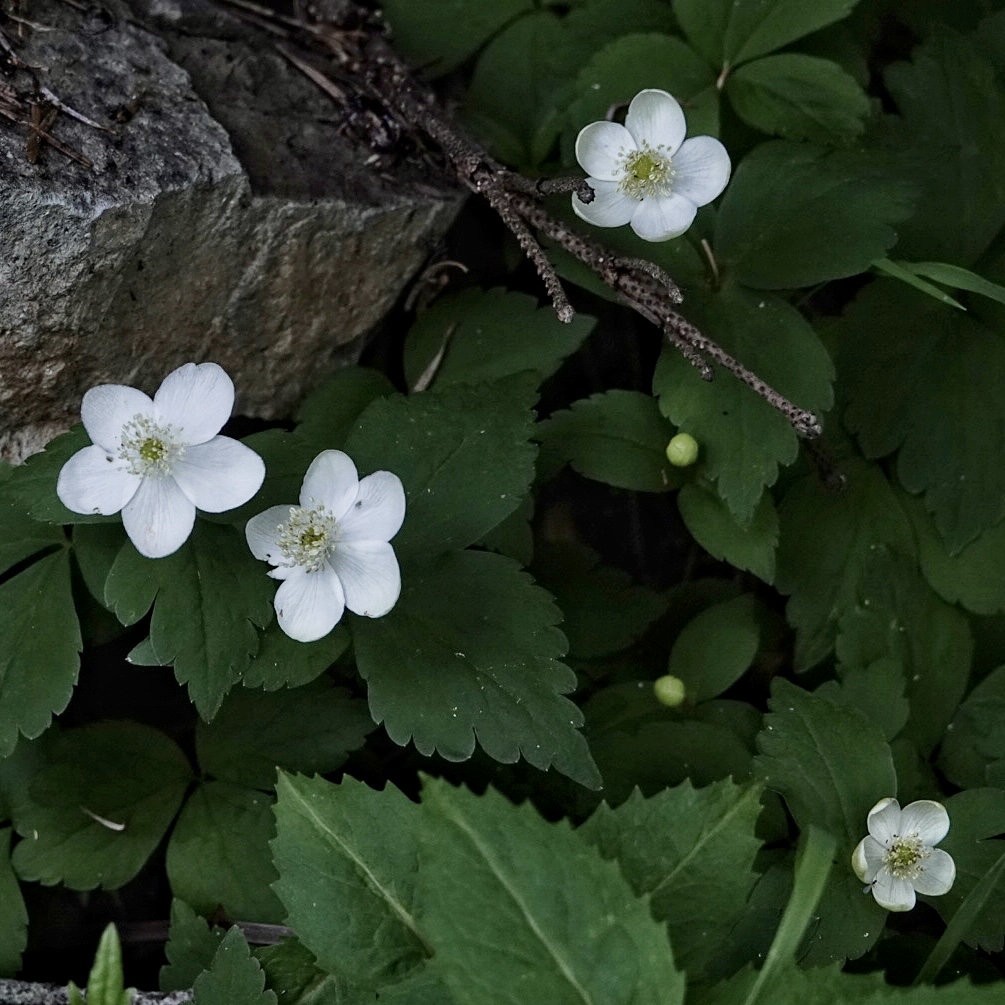
Ethnobotany– I can find no ethnobotanical uses for this plant.
Description– “4-10” tall…Single erect stem. One basal leaf divided into 3 coarsely toothed leaflets; whorl of 3 sessile stem leaves below the flower. One flower, 1 1/2–2 1/2 in. wide, with 5 white petal-like sepals.” Anemone deltoidea | Columbia Windflower | Wildflowers of the Pacific Northwest; “This is a rhizomatous perennial herb growing between 10 and 30 centimeters tall. There is usually a single basal leaf which is divided into three large toothed leaflets, each up to 6 centimeters long. There may be more leaves along the mostly naked stem which are similar in appearance to the leaflets on the basal leaf. The inflorescence has three leaflike bracts and a single flower. The flower has no petals but five petal-like white sepals each one to two centimeters long. There are up to 120 whiskery stamens and many pistils. The fruit is a cluster of spherical achenes.” https://en.wikipedia.org/wiki/Anemonastrum_deltoideum
Similar species–Anemone oregana (Oregon Anemone), A. lyallii, A. piperi have compound involucre leaves.
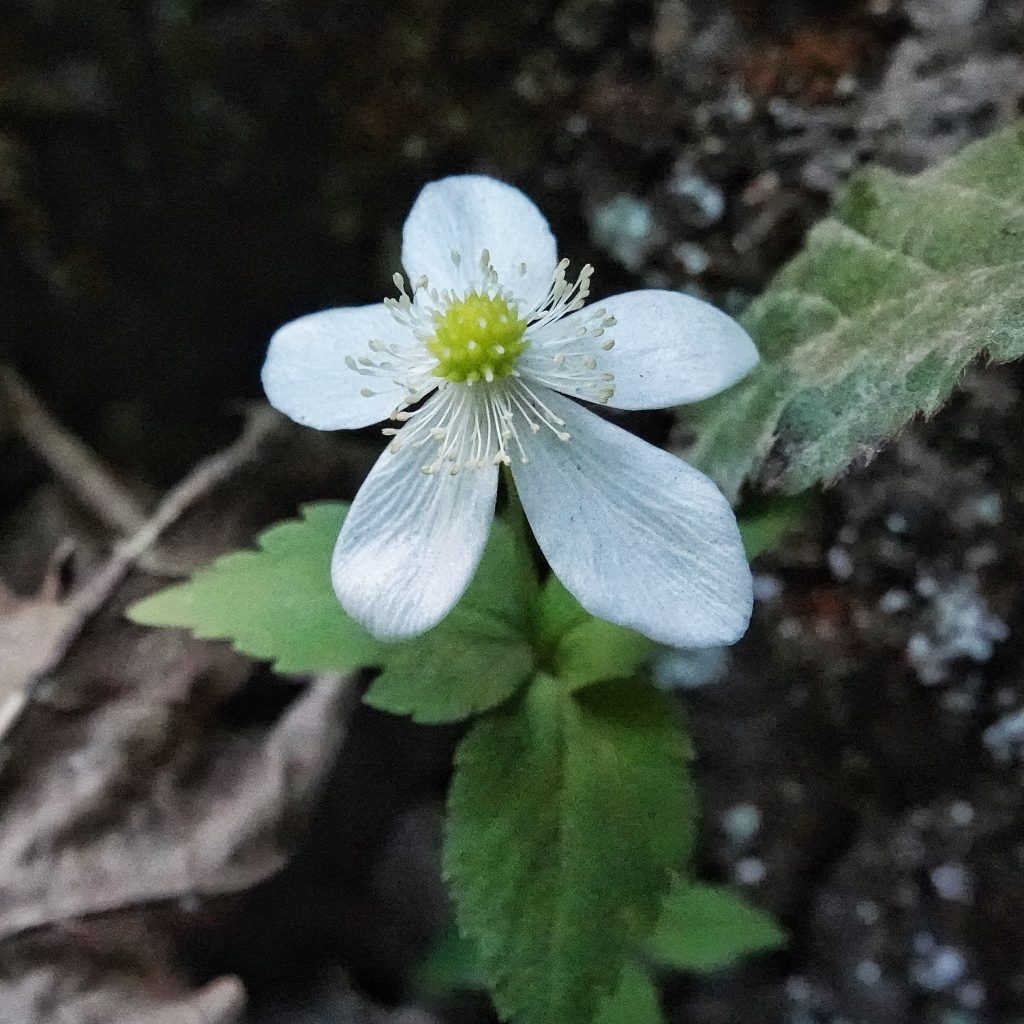
Habitat– Openings in moist to mesic forests up to 6,000’ elevation.
Range-Endemic to the PNW; primarily found west of the Cascade Crest from King County to sw Oregon, as well as in the coastal area of sw Oregon /nw California; possibly disjunct populations in the Wallowas
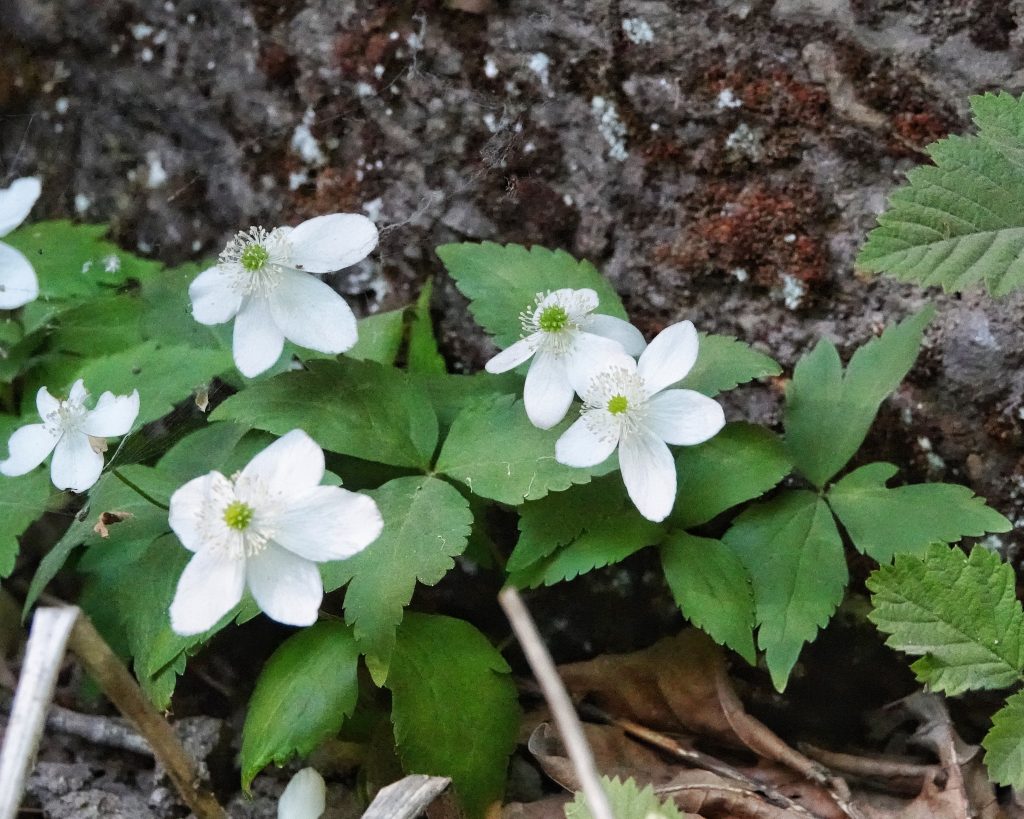
Eaten by– According to some gardening sites Anemone in general are deer resistant; I can find nothing specific to this species, but it seems likely that larvae of leaf mining flies in the genus Phytomyza utilize this plant, since they feed on other members of the genus; probably visited for nectar and pollen by a variety of pollinators, including bumble bees.
Reproductive timing– Flowers bloom from April through July, depending on elevation and latitude.
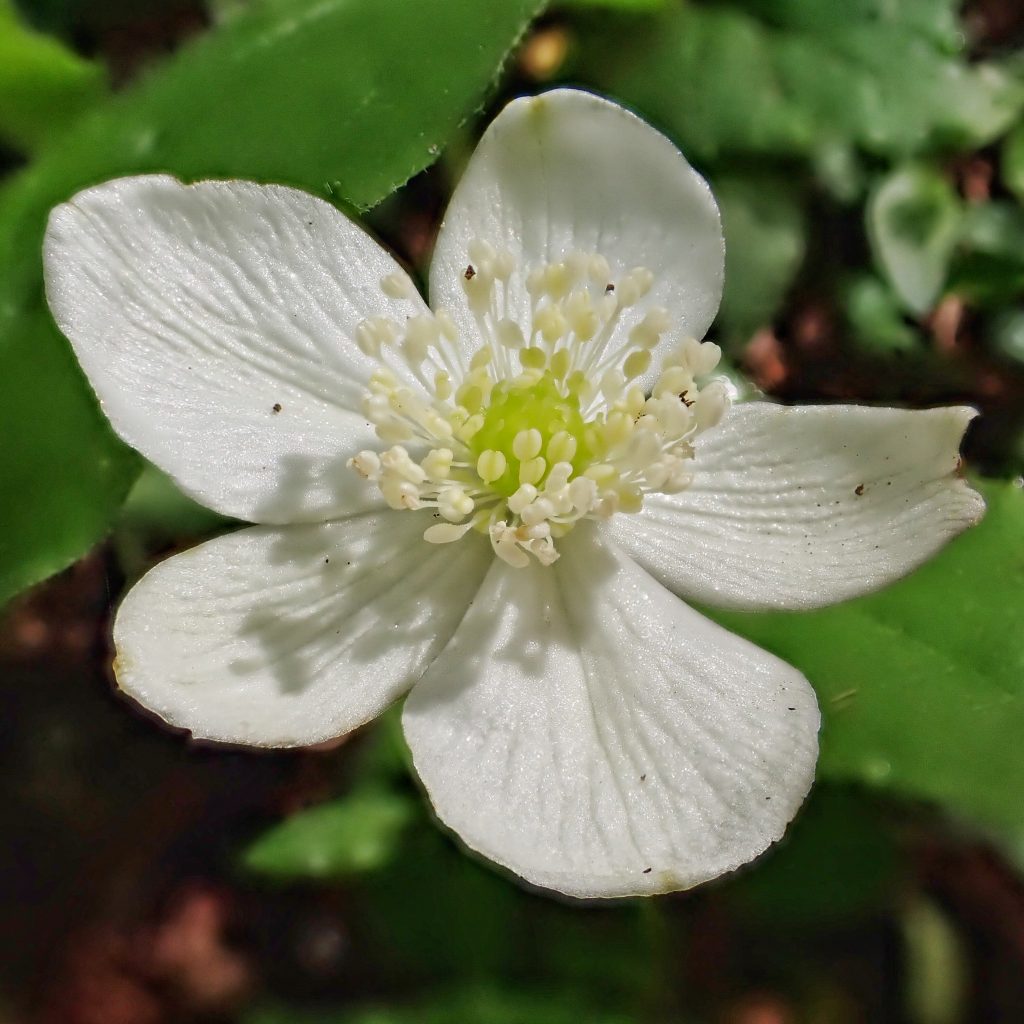
Etymology of names– Anemone comes from the Greek word for ‘daughter of wind’. This may reference the delicacy of the petals, which can be torn off by the wind (and this is the interpretation that leads to them being called ‘windflowers’), or it may be a reference to the Greek myth that anemones were created when Aphrodite mixed the blood of Adonis with nectar and sprinkled it on the ground. The specific epithet deltoidea is from the 4th letter of the Greek alphabet, which is shaped like a triangle, and may refer to the general shape of the involucre leaves, but I cannot verify this.
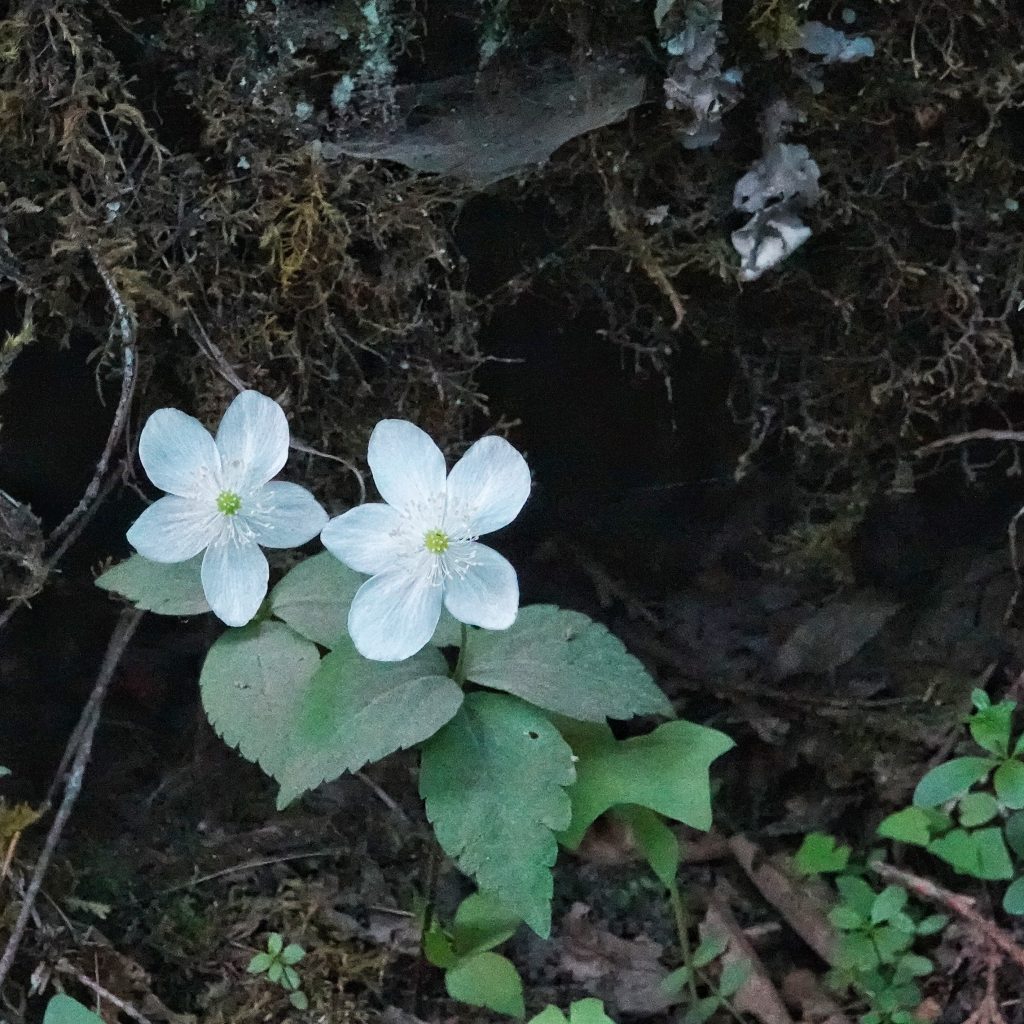
Anemone deltoidea | Columbia Windflower | Wildflowers of the Pacific Northwest
https://en.wikipedia.org/wiki/Anemonastrum_deltoideum
Columbian Windflower, Anemone deltoidea
Anemone deltoidea in Flora of North America @ efloras.org
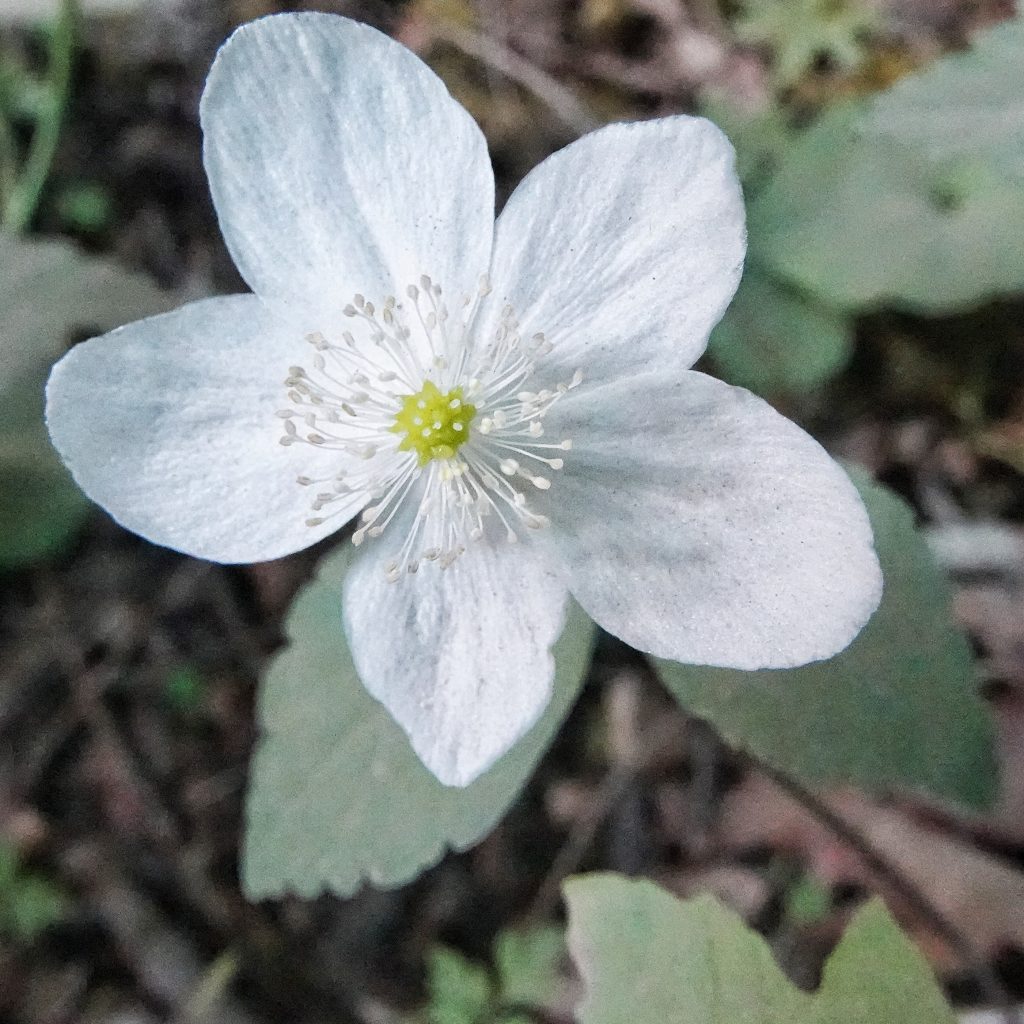
These photos, and especially the last, are so beautiful. Thanks for spreading the loveliness!
Thank you, Kat!